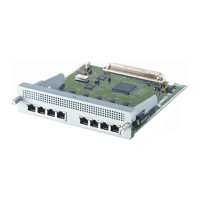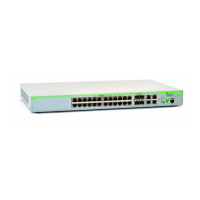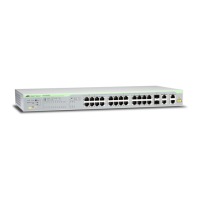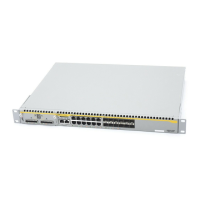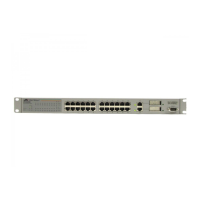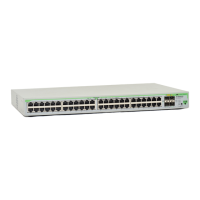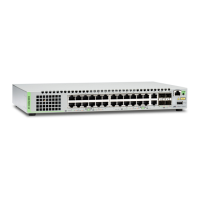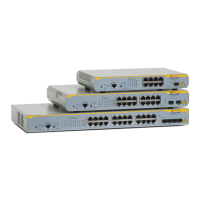Introduction Multiple Spanning Tree Protocol (MSTP)
Software Reference for SwitchBlade x3100 Series Switches (Layer Two Switching)
4-78
4.5.8 Multiple Spanning Tree Protocol (MSTP)
The previous subsections have described the STP and RSTP features and how they are configured. It is also pos-
sible to configure multiple (R)STP instances on a VLAN basis, so this is called the Multiple Spanning Tree
Protocol (MSTP).
With MSTP, separate spanning tree instances are created for VLANs (or groups of VLANs). Each of the sepa-
rate instances elect root bridges, root ports, and designated bridges independently.
When an (R)STP network is configured and no VLANs are configured (only the default VLAN), each device and
each port are considered part of the same extended LAN, and so all participate in the same convergence pro-
cess. Therefore all devices and ports are part of a single (R)STP instance. As VLANs are added, they are still
part of the single spanning tree instance.
Note: As VLANs are configured, the user must be careful to ensure that the physical (link) and virtual
(VLAN) connections work together and do not lead to any disconnected VLANs.
This association of multiple VLANs with the one spanning tree is called a Common and Internal Spanning Tree,
or CIST. Bridges configured within a CIST behave as a single spanning tree system automatically.
With MSTP, additional spanning tree instances can be created and associated with the VLANs defined on the
device. These additional spanning tree instances are called Multiple Spanning Tree Instances (MSTI).
Verify the root bridge change
8
show stp
--- STP Information -----------------------------------------------------------
Spanning Tree Type...................... RSTP
Instance Name......................... MAIN (0)
Instance State........................ ENABLED
Root Bridge ID Priority............ 0
Root Bridge ID MAC Address....... EC:CD:6D:03:10:CB
Max Age (seconds)..................... 20
Hello Time (seconds).................. 2
Forward Delay (seconds)............... 15
Bridge ID Priority................. 0 (priority 0 mstid 0)
Bridge ID MAC Address............ EC:CD:6D:03:10:CB
Bridge Max Age (seconds).............. 20
Bridge Hello Time (seconds)........... 2
Bridge Forward Delay (seconds)........ 15
Int Role State Cost Prio.Number Type
----- ---------- ---------- ---------- ----------- -------------------------
0.0 DESIGNATED FORWARDING 20000 128.321 RSTP
0.20 DESIGNATED FORWARDING 200000 128.341 RSTP
0.21 DESIGNATED FORWARDING 200000 128.342 RSTP
0.22 DESIGNATED FORWARDING 20000 128.343 RSTP
1.2 DESIGNATED FORWARDING 2000 128.387 RSTP
1.3 DESIGNATED FORWARDING 2000 128.388 RSTP
11.0 DESIGNATED FORWARDING 20000 128.1025 RSTP
TABLE 4-12 Configuration Procedure for RSTP
Step Command Description/Notes
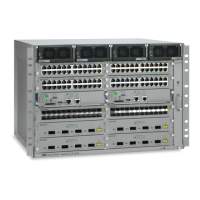
